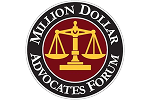for Our Clients Since 1935
What is a ‘Serious Injury’ and why do I Need it to sue for a Car Accident In NY?
So you have been in motor vehicle accident in New York. The other driver ran a red light and crashed into the side of your vehicle. You did nothing wrong. Are you entitled to compensation for your pain and suffering? Most people we speak with after an accident think they are. The answer is: maybe.
Since the advent of the no fault law on February 1, 1974 if you are involved in a motor vehicle accident you are entitled to no fault benefits from the insurance for the car you were in (regardless of whether the driver of that vehicle was at fault) or, if you were a pedestrian, the car that hit you. This includes lost wages and medical expenses which you are entitled to regardless of fault. Even if you were the one who ran the red light, if you are injured you receive benefits under no fault (hence the term “no fault”). However, when the law was enacted the injured party gave up certain rights (the right to sue for pain and suffering) to gain the immediate payment of benefits. In the pre-no fault days if you did not have health coverage or disability insurance you would not be paid for your lost wages and medical bills and would have to sue the “at-fault” driver to receive these benefits. This led to delays in wages and medical benefits paid. The trade-off actually benefited most injured victims.
The law provides that unless you have suffered a “serious injury” you cannot recover what lawyers call “non-economic losses” (pain and suffering compensation). “Serious injury” is defined by Insurance law §5102(d) as: (a) death; (b) dismemberment; (c) significant disfigurement; (d) fracture; (e) loss of a fetus; (f) permanent loss of use of a body organ, member, function or system; (g) permanent consequential limitation of a body organ or member; (h) significant loss of use of a body function or system; or (i) medically determined injury or impairment of a non-permanent nature which prevents the injured party from performing substantially all the material cats which constitute such person’s usual and customary daily activities for not less than 90 days during 180 days immediately following the occurrence of injury or impairment.
Wow! That’s a mouthful. Let’s break that down to see all the ways you can qualify for a “serious injury” (and thus qualify for pain and suffering compensation from the at-fault driver’s insurance):
- (a) DEATH. This one is simple: the person died. Obviously the deceased will not be entitled to compensation, but the surviving family will.
- (b) DISMEMBERMENT. The injured party has lost one of their limbs or a part thereof such as a finger or toe.
- (c) SIGNIFICANT DISFIGUREMENT. Usually this means a visible scar. The law requires that it must be of such a nature that other people looking at it would hold you up to “ridicule and scorn”. So this is a relatively subjective standard. Not all scar cases qualify.
- (d) FRACTURE. You suffered a broken bone. Usually the x-ray will show that some bone has been broken. It could be a complex fracture or a simple fracture of the pinky. If you suffered a fracture you qualify.
- (e) LOSS OF A FETUS. If you are pregnant and lose your fetus as result of the collision you will qualify.
As you can see the serious injury categories (a) – (e) above are fairly straight forward and self-explanatory. While there is always some room to argue on each particular definition it is usually based on some objective standard without the need for the injured party’s comments. For example: an x-ray that demonstrates a fracture; or looking at the person to visualize a scar or loss of an arm or leg. It does not require the injured party to verbalize complaints to reach the diagnosis. If you have one of these injuries you will most likely qualify. Of course, there are exceptions to every area of the law and it is not always black and white. But generally these are pretty clear on their face.
On the other hand, serious injury categories (f) – (i) (discussed below) are anything but objective or clear. They have been the subject of voluminous case law clarifying and defining what each one means, especially in the context of what is known as “connective” or “soft tissue” injury cases. These kinds of cases are commonly known as “whiplash” injuries.
While this special report could be hundreds of pages long trying to explain what categories (f) through (i) mean, we can more easily tell you what they don’t mean: “subjective” complaints of pain or injury (meaning you report pain to your doctor) without objective diagnostic tests (such as x-rays or MRI’s or range of motion tests) to verify the subjective complaints will not be considered “serious injuries” under these definitions. It doesn’t matter how much you complain about your back or neck hurting after an accident, New York courts have consistently held that if you don’t have “objective” medical tests to verify your subjective complaints of pain you will not qualify for a “serious injury”. Period. The law wants to weed out fraud and bogus claims. To do so, they require injuries that can be objectively verified by way of diagnostic testing. So if you do not have a threshold “serious injury” based on definitions (a) – (e) it will be increasing more difficult to qualify you under definitions (f) – (i).
The (f) through (i) categories of “serious injury” also require that you have some period of disability. They require either significant permanent limitations in the use of a body part (the limited use will last until you die) or an injury that caused you to be unable to perform most of your daily activities for 90 out of 180 days following the accident. Mild minor or slight limitations will not cut it. In fact, the law defines a serious injury as something more than minor, mild or slight. In other words, if your treating physician were to diagnose you with a “mild permanent impairment” you would not qualify. Yes, you heard me correctly. The law does not permit you to recover for a permanent injury caused 100% by a negligent driver if it is not something more than a mild permanent impairment. Does not seem fair, does it?
We spend a lot of time early on in a case where we are dealing with definitions (f) – (i) explaining to the client that they may not qualify until such time as they may receive a permanent significant impairment rating from their doctor. We hear this over and over from our clients: “But the other guy was at fault. He ran the red light and I did nothing wrong. I have this pain in my back that is killing me.” We feel for our clients. We truly do, but the law says you do not get to recover under categories (f) through (i) unless you have a significant loss. So, now that we have prefaced serious injury categories (f) through (i), let’s describe them:
- (f) Permanent loss of use of a body organ, member, function or system. this category requires that you have permanent and complete loss of use of a body part. If you have lost a spleen or kidney it will qualify you. Likewise if you have lost your sight or hearing you will qualify. We have represented individuals with anosmia or loss of sense of smell. If it’s a complete loss it will qualify you. This category of serious injury is rarely in play because most injuries do not result in a complete and permanent loss of use of a body part.
- (g) Permanent consequential limitation of a body organ or member. This category is different than the previous one in that it does not have to be a total loss but rather only a “consequential” limitation of the use of the body part. It still has to be a permanent loss, though. So you may not have lost your spleen but it has been damaged to a degree that it significantly impaired forever. Or maybe you have not lost all of your eyesight but significant enough that it prevents you from working or driving.
- (h) Significant loss of use of a body function or system. This category is very similar to the one above, but does not require that the loss be permanent. It does, however, require that the loss be significant. For example, we handled a case some years ago where our client was involved in a severe motor vehicle crash that left him in a coma for several days. He suffered no other physical injuries. No fractures or scars or dismemberment. He just went into a coma from the severity of the blow. The insurance adjuster was not going to pay anything on the case because she held the opinion he did not qualify under any category. We argued that he had a significant loss of a body function of a non-permanent nature for several days. He was completely unable to do anything. He was out for days. Miraculously when he woke up he was fine but he suffered an injury that significantly limited him no matter how short. She finally was convinced and paid money to settle the claim. So this category can be utilized if the injury is significant at first but the client makes a speedy and full recovery.
Many but not all “whiplash” or soft tissue injuries can qualify as “serious injuries” under categories (g) and (h).
- (i) Medically determined injury or impairment of a non-permanent nature which prevents the injured party from performing substantially all the material acts which constitute such person’s usual and customary daily activities for not less than 90 days during 180 days immediately following the occurrence of injury or impairment. We refer to this as the “90/180 rule”. Generally speaking, if your physician has taken you out of work for over 90 days you should qualify or, at the very least, have an argument that you qualify. “Medically determined injury or impairment” means your physician has determined you have an injury that prevents you from performing your usual and customary activities. It requires a level of disability that prevents you from doing most things (substantially all) you did on a daily basis before the accident.
In sum, to qualify to receive any money for pain and suffering in a New York State car accident, you must meet the “serious injury threshold” in at least one of the categories above. It isn’t always easy to reach the threshold. That’s why you need a talented and experienced lawyer to help you convince an insurance adjuster that you have reached the threshold. The bottom line is that in New York just because you have a clearly negligent driver and you did nothing to contribute to the accident does not mean you will receive anything for your inconvenience or pain and suffering. Remember you have to show two things to receive compensation: (1) the other driver was negligent; (2) his negligence caused you to suffer a serious injury as defined in §5102(d). If you fail to prove both of these you receive nothing. It is very tough for the injury victims to hear, but unfortunately, it is the law in New York.
If you have been involved in a car crash in New York, call us as soon as possible at 315-253-3293 so we can determine whether you are likely to have a “serious injury” so that you can be fully compensated for your injuries.
How The Claims Process Works
- (1) Getting to know you. Our first meeting will probably take up to an hour. We will thoroughly question you, and examine whatever records you have, to gather all available evidence and leads to evidence. We will also get to know each other and decide whether we want to work together on your case. If we agree to work together, we will both sign our retainer agreement.
- (2) Gathering records. Your medical records are extremely important and will play a big role in proving the “value” of your case. Since we need to be sure we get ALL the records, we will have you sign authorizations allowing us to write directly to each of your medical providers, who will then send us all your records. From time to time, we will write them to get updates. We will similarly gather any records of your past income should you be claiming lost income. Relax: gathering records is all on us. All you have to do is sign the authorizations.
- (3) Getting our ducks lined up. We will also write to all the relevant insurance carriers, defendants, etc. We may also take statements from witnesses. This will ensure we have everything in place for when we eventually make a settlement demand.
- (4) Waiting. Yes, that’s right. The next step is usually just waiting. Waiting for what? For you to heal. We can’t make a settlement demand until we know the extent of your injury, and whether you will have a permanent loss, and if so, how severe that loss will be. If we settle before we know the permanent consequences, then we will sell you short. The insurance company will not pay for permanent injuries as long as you are still treating and there is a chance you will completely heal. The wait may be for months or even a year or longer, depending on the injury.
- (5) Settlement. Once you are done treating, all the lawyers (yes all of us!) will study your file, your medical records, etc., and together we will decide – based on our experience in the courtroom — what a fair settlement should be. We will then call you back to our office to meet with you and discuss our recommendation. You can accept or reject our recommendation. If you accept it, we will then try to settle the case for MORE or at least as much as we have agreed would be fair. But if the insurance company offers less than the number we agreed on, and negotiations fail to bring them up to our number, we will help you decide whether we should “take them to court” or simply take the last best offer. The decision is always yours, but we provide you will all the information you need to make an informed decision.
The End Result
We have helped hundreds of people just like you get their lives back in order after suffering serious injuries.
For example, Tony, a welder, was stopped on a highway waiting for oncoming traffic to clear to take a left-hand turn into his place of employment. He was violently rear-ended when the driver was texting instead of paying attention to the road. Tony’s wheels were already turned left, and the impact flipped his car over. He suffered a disabling back injury which eventually required surgery. He was never able to return to work. A year and a half after his accident, our team got him a seven-figure settlement, which included structured life-long payments.
Please note that past case results are no guarantee of future successes. Each case is different. We have described just one of the hundreds of cases we have brought to successful conclusion just to give you an idea of how we handle motor vehicle accident cases.
Our team is standing by to help you, too. As a matter of fact, we look forward to your call and the chance to serve you as we have served others in our community. While we certainly can’t guarantee any results, we may be the right law firm for you. The best way for us to find out is by calling us at 315-253-3293 to arrange a free consultation.
Yours,
The Michaels Bersani Kalabanka Team











